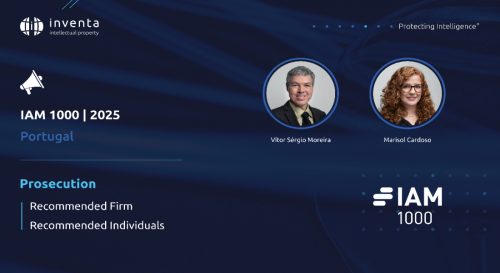
World IP Day 2025: The hidden cost of a stream
Every year, WIPO dedicates a theme to World Intellectual Property Day, celebrated on April 26th. In 2025, the theme is 'IP and Music: Feel the Beat of IP,' aiming to raise awareness about the importance of intellectual property in the music sector.
Music - one of the most powerful forms of human expression, transcending time and space - is intrinsically linked to copyright. Today, with the rapid circulation of musical content across radio, streaming platforms, social media, and online videos, it is essential to establish legislation that provides music creators with a robust legal framework to protect copyright in the digital environment.
A strengthened copyright system is essential to ensure that artists receive recognition and appreciation for their creative work, along with fair remuneration for their creations. This enables musicians to sustain their careers with dignity. Moreover, an effective system of copyright protection plays a vital role in combating digital piracy and fostering cultural diversity.
Over the past decade, streaming platforms have revolutionized the way we consume music. Services such as Spotify, Apple Music, Deezer, and YouTube have made access to music easier, faster, and more global than ever before. However, this transformation has also introduced new challenges and sparked ongoing debates, especially concerning fair remuneration for artists.
Most platforms use a remuneration model known as pro-rata. In this system, the total revenue generated from subscriptions and advertising is pooled into a common fund. This fund is then distributed among artists in proportion to the number of times their songs are streamed, relative to the total number of streams on the platform.
(...) new forms of music distribution are emerging with more direct remuneration models, such as Bandcamp and Patreon. These platforms enable fans to support artists directly, often allowing creators to retain a larger share of the revenue.
Although efficient at scale, the pro-rata model raises several concerns. It tends to favor major artists - those who accumulate millions of streams - at the expense of independent or niche musicians with smaller, dedicated audiences. Moreover, subscribers often end up indirectly funding artists they never listen to, which can disadvantage the very artists they actively support.
For this reason, alternative models of artist remuneration have gained attention, notably the user-centric model. This approach proposes a more personalized method of revenue distribution: the amount paid by each subscriber is divided solely among the artists that the user listens to. In theory, this model promotes musical diversity and offers greater support to independent artists, ensuring compensation that accurately reflects individual listening habits.
However, this system also has its limitations. A study conducted by Pro Musik, a German organization representing independent artists, found that adopting the user-centric model could lead to a significant redistribution of revenue. In 16 out of the 18 countries analyzed, more than 25% of total revenue could be redistributed among artists. According to the same study, around one-third of artists could see their income increase by at least 40%, and nearly 20% could potentially double their earnings under this model. However, over one-third of the artists analyzed could also see their income decrease by 40% or more. The study does not advocate any model but provides essential information to help artists make informed decisions.
In addition to traditional platforms, new forms of music distribution are emerging with more direct remuneration models, such as Bandcamp and Patreon. These platforms enable fans to support artists directly, often allowing creators to retain a larger share of the revenue. This approach fosters closer connections between artists and their audiences, encourages artistic independence, and offers more sustainable alternatives for those who rely on music as their livelihood.
The way artists are remunerated on digital platforms is a central issue for the future of music. The discussion around fairer, more transparent, and inclusive payment models must involve not only platforms and record labels, but also the creators themselves and the listening public. Only through collective dialogue can we shape a music ecosystem that truly values and sustains artistic creation.
Thus, as we reflect on the challenges and opportunities of the digital age, it becomes ever more important to foster a culture of respect for copyright - one in which music is not only heard, but also acknowledged, valued, and protected.
Lista de Territórios
Não existem resultados para a sua pesquisa.
- África
- África do Sul
- Angola
- Argélia
- Benin
- Botsuana
- Burkina Faso
- Burundi
- Cabo Verde
- Camarões
- Chade
- Comores
- Costa do Marfim
- Djibuti
- Egito
- Eritreia
- Eswatini (Suazilândia)
- Etiópia
- Gabão
- Gâmbia
- Gana
- Guiné
- Guiné-Bissau
- Guiné-Equatorial
- Lesoto
- Libéria
- Libia
- Madagáscar
- Maiote
- Malaui
- Máli
- Marrocos
- Maurícias
- Mauritânia
- Moçambique
- Namíbia
- Níger
- Nigéria
- Quénia
- República Centro-Africana
- República Democrática do Congo
- República do Congo
- Reunião
- Ruanda
- Saara Ocidental
- São Tomé e Principe
- Seicheles
- Senegal
- Serra Leoa
- Somália
- Sudão
- Sudão do Sul
- Tanzânia
- Togo
- Tunísia
- Uganda
- Zâmbia
- Zanzibar
- Zimbábue
- África (OAPI)
- África (ARIPO)
- Mais Territórios
- Macau
- Maldivas
- Portugal
- Timor Leste
- Marca da União Europeia (EUIPO)
- Marca Internacional (Sistema de Madrid)
- Patente Europeia (IEP)
- Tratado de Cooperação em matéria de Patentes (PCT)




